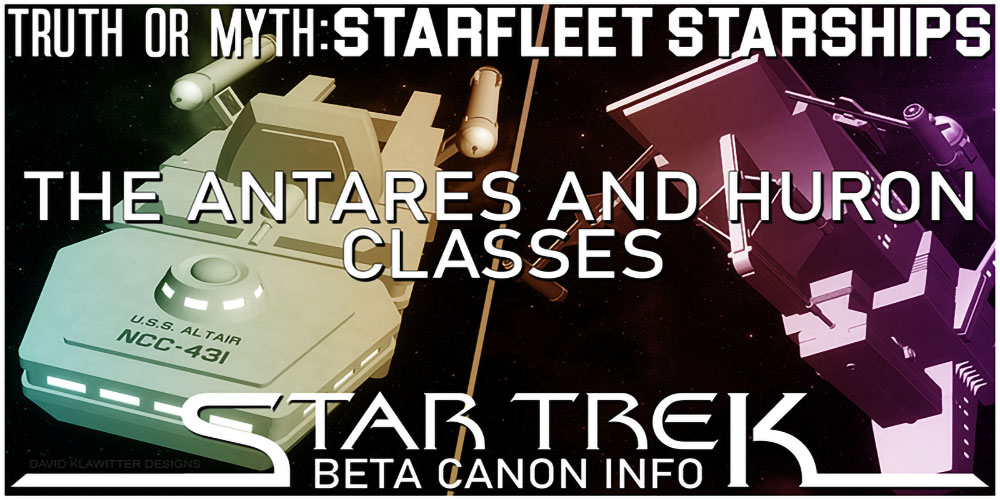Hello and welcome to another episode of Truth OR Myth Beta Canon, a Star Trek web series that dives into the history of any given topic using Beta Canon sources and my own imagination to fill in the gaps. In today’s episode, we’re taking a look at the Antares and Huron Cargo Starship designs from the TOS Era, to better understand their place in Star Trek History.
As always, Because this IS a Beta Canon video, all information relaid should pretty much be taken with a grain of stardust, and only considered a little bit of Star Trek Fun! And so, with all that out of the way, let’s begin.
After the First Federation/ Klingon War ended in 2257, the United Federation of Planets embarked on a massive rebuilding and fortification of their home space. But to do this, Starfleet Command needed to revamp their entire Cargo Running infrastructure to provide all the resources necessary to accomplish these lofty goals. But what do we know about these Cargo Vessel Classes?
The war with the Klingon Empire had devastated Federation Space far more than the General Public knew. Though the Federation was considered victorious, with the Klingon Empire withdrawing back into their own space, many colonies and Starfleet Facilities along the Federation/ Klingon Border had been virtually destroyed in the conflict.
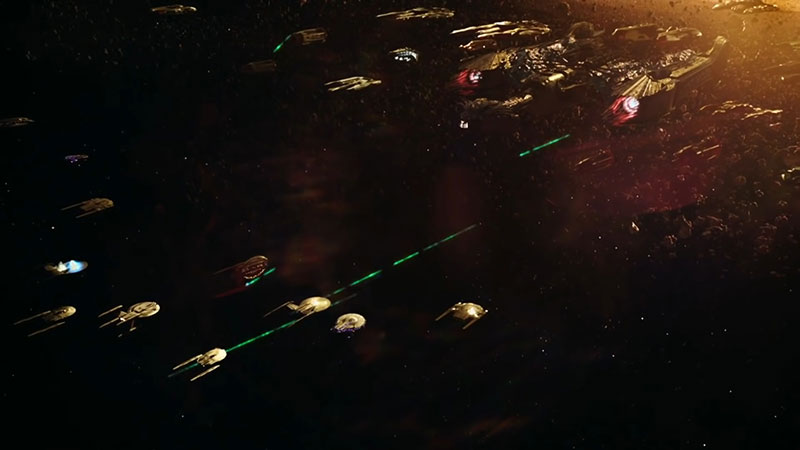
And although the situation with the Empire was stable for now, that could change at any moment, and Starfleet wanted to be prepared for that type of scenario.
two-thirds of Starfleet’s own Fleet had either been destroyed or badly damaged, receiving temporary, quickly done, patch up jobs, so not only did Starfleet have to contend with all the colonies and facilities demand to repair and resupply, but they themselves needed the resources to rebuild their own fleet.
The Federation’s Cargo Services simply was not up to the task, and so Starfleet Command pulled a page from their own War Time book, this time pulling older cargo ships from their decommissioned shipyards and quickly repairing and upgrading them to press them into immediate service.
Of course, this was only a temporary solution, as Starfleet realized it needed a better Cargo Infrastructure going forward, so Starfleet’s Design Engineers were given the task to design new easily constructed Cargo Vessels to aid in the reconstruction effort.
2245 had seen the debut of the Constitution Class and since then, many other Classes with the same aesthetic had also been launched to rave reviews. And so the Design Engineers would decide to design their cargo vessels, in a similar style to that of the Constitution Era designs.
And as a result, several Cargo Starship designs would be approved and constructed, thus the Antares and Huron Classes would be born…
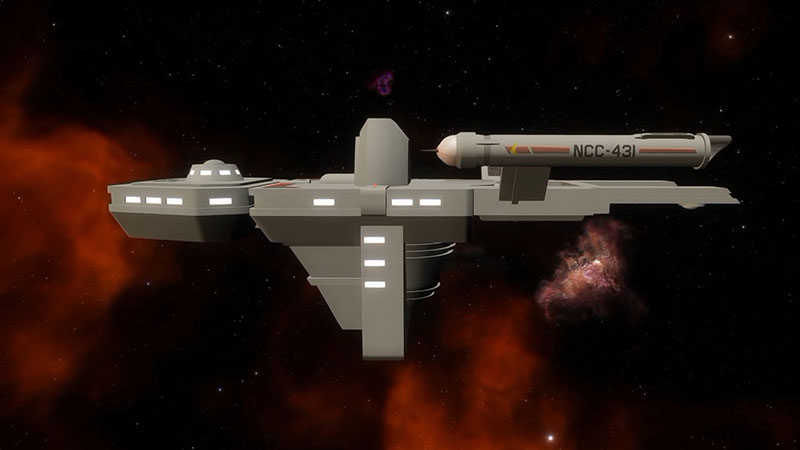
The Antares Class
Sitting at a length of 56 meters and a width of 20 meters, the Antares Class was designed to be operated by 20 officers and Crew members. A forward section, known as the command section, could be detached from the primary hull the result of which allowed a nearby Starbase, with the command codes of the vessel, to program in a course and speed and send the Cargo starship on its way.
One of the most innovative aspects of this cargo vessels design was its ability to be completely automated. This had the benefit of allowing the starship to still operate even with the shortage of manpower Starfleet was facing after the war.
Of course, automation had its disadvantages, and thus this ability was generally only used in the Core of the Federation, where the automated vessel was least likely to encounter raiders or other space phenomena.
The Antares Class had a safe cruising speed of Warp Factor 4 and an emergency speed of warp factor 7. Armed with 4 type IV Phaser Emitter banks along with standard shield emitters of the time, would provide protection for the Class.
While on its automated run, should the starships sensors detect an approaching vessel, its shields would automatically be engaged, while simultaneously, the ship would send out a general message to the nearest Starfleet Facility informing that base of its encounter.
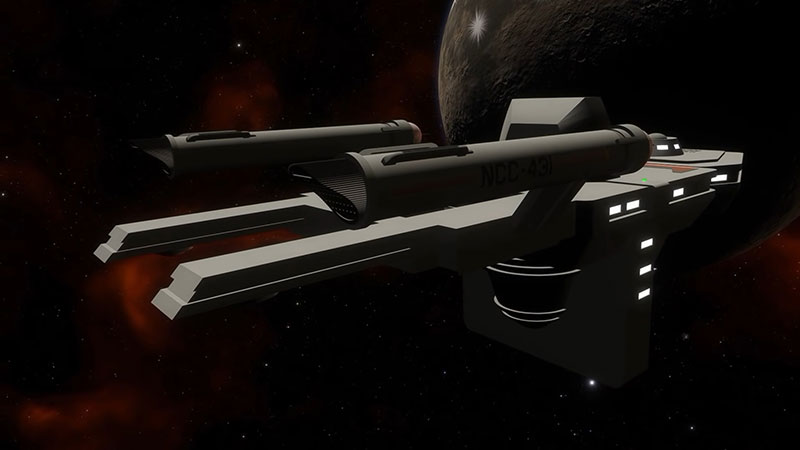
Should the approaching vessel fail to meet required identification protocols, the Starfleet Facility or base could assume full tactical control of the vessel or send another Starfleet Starship to intercept the Cargo Starship.
Internally, the Antares Class could be easily reconfigured for a variety of Cargo Missions. Each Cargo Bay aboard the ship also had the ability to be reprogrammed for a variety of Temperature and Environmental concerns. 2 Large Cargo transporters would provide unloading capabilities for this class.
Once an Antares Class Cargo Vessel arrived at its destination, the receiving facility would re-enter the command codes, take control of the starship, beam a Cargo Crew aboard the ship and begin the unloading process.
Once complete, the starship would then be re-programmed for its new destination to begin the process all over again. The easily constructed Antares Class would be considered a godsend in the early years after the First Federation/ Klingon War.
Like the Huron Class, it would be the primary source of resource allocation for the Federation until the Ptolemy Class, a much larger, more extensive starship design, would take over the Antares Classes primary duties.
Nevertheless, the Antares Class would remain in service until the mid-2270’s, relegated to standard, but smaller cargo runs, until the Class was finally decommissioned.
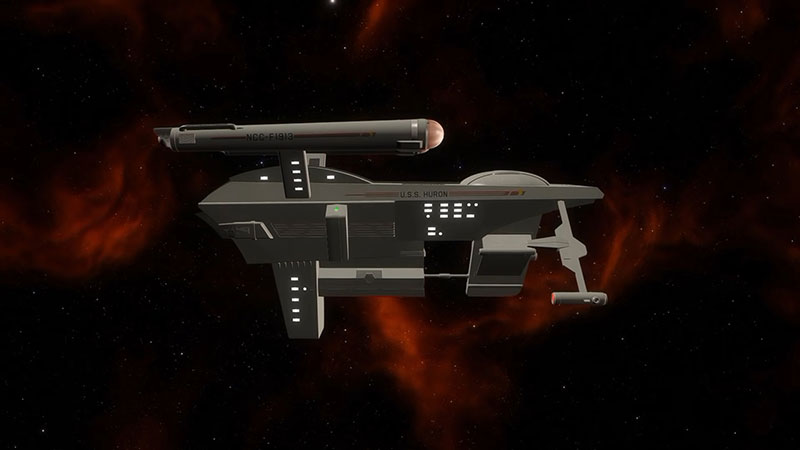
The Huron Class
Sitting at a length of 152 meters and 13 decks tall, the Huron Class was designed to be operated by 41 officers and Crew members. Much larger than its Antares Class counterpart, the Huron Class was a pretty standard cargo vessel style design for its time.
Also unlike the Antares Class, the Huron Class did not have the ability for fully automated operation, but many of these classes systems did indeed include a level of automation that allowed the starship to operate by a much smaller crew than it would have normally required. In fact, this starship crew compliment could be taken as low as 3 officers and crew members, though this scenario was only done in an emergency and rare situations.
The Huron Class had a safe cruising speed of Warp Factor 5.5 and an emergency speed of warp factor 7.2. 2 specially designed Impulse Engines were also attached to this class via pylons, an oddity of this starship classes design.
Armed with 4 type IV Dual Phaser Bank Emitters and 1 forward torpedo launcher, along with standard shield emitters of the time, would provide protection for this Class.
Internally, the Huron Class could be easily reconfigured for a variety of Cargo Missions. Each Cargo Bay aboard the ship also had the ability to be reprogrammed for a variety of Temperature and Environmental concerns. 4 Large Cargo transporters would provide the primary unloading capabilities for this class. While 2 Large Platform-style Shuttlebay would provide secondary unloading capabilities, should the transporter system be unavailable.
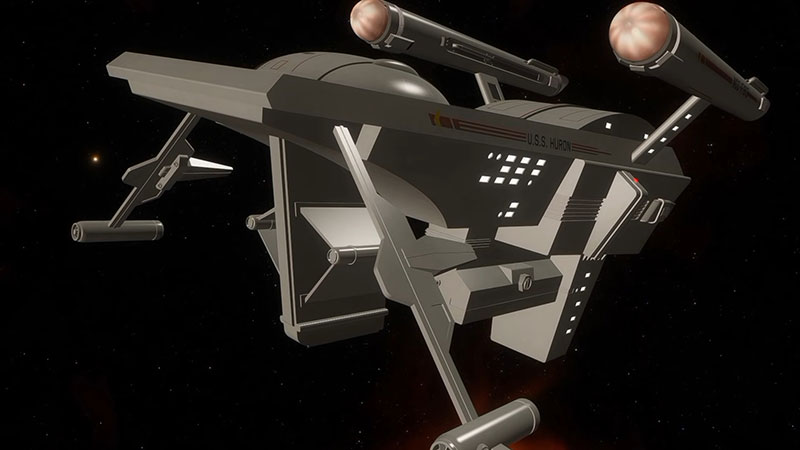
The Huron Class would generally be used on more dangerous missions, closer to hostile space. Due to its superior Tactical systems compared to that of the Antares Class, meant this vessel design could last far longer in a firefight, allowing any nearby starships to render assistance, of course, on more important Cargo runs, the Huron Class would be accompanied by at least 1 Saladin Destroyer or Loknar Class starship to ensure it arrived safely at its destination.
Like the Antares Class, the Huron Class would continue its service to Starfleet and the Federation well into the 2270s, until much more advanced designs would see the class decommissioned by Starfleet command…
Another major difference for both these classes was that most weren’t commanded by commissioned officers, but rather a Starfleet Civilian force was incorporated as a special branch of Starfleet Command. As a result, after both these Classes were officially decommissioned by Starfleet, many of these starships would end up being purchased and used in civilian cargo fleets by their own crews.
In fact, still to this day, there are both Antares and Huron Class starships operating within the Federation, having received upgrades and refits through out the decades to keep them running.
Though not a glamorous life like those aboard ships of the line would experience, the Antares and Huron classes would be a major requirement for the United Federation of Planets as a whole during a trying and fearful time in the Federation’s existence, earning these classes their place as unsung heroes in Starfleet History…
What to help this channel rebuild after the war? Then just click HERE to become a channel Patron…
Watch The Latest Truth Or Myth Below
Thank you for watching today’s episode of Truth or Myth Beta Canon, what do you think of the Antares and Huron Classes, as well as the historical narratives that I’ve created here. Would you like to see more videos like this one? Well leave your comments in the section below and don’t forget to like the video and subscribe to the channel.
Thanks again for watching, Live long and prosper…

